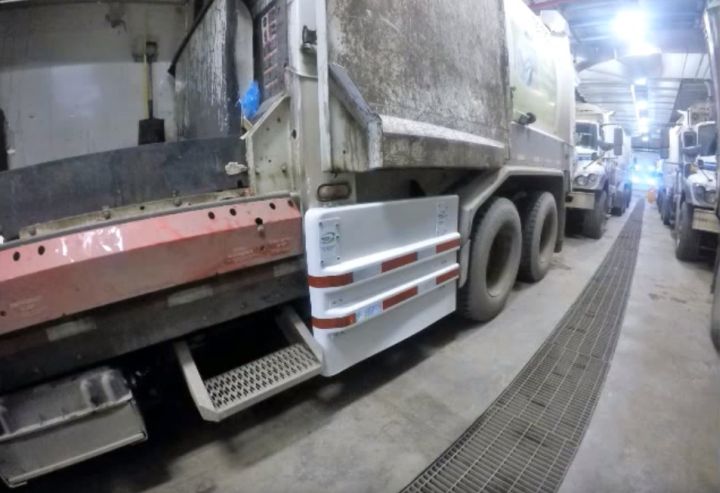Some Canadian cities have already started using them and now a pilot project is underway in Alberta’s capital to see if side guards on trucks can help reduce pedestrian and cyclist fatalities.

“It’s just mounted onto the frame of the truck and it’s just to close off any of the open spaces in front of the wheels typically,” Trent Tompkins, director of waste collection services with the City of Edmonton, said on Wednesday.
Watch below: A video posted to YouTube by AirFlow Deflector on Feb. 1, 2017 looks at side guards being installed on City of Edmonton trucks.
“We’re trying to increase the safety with the trucks to ensure that we can enclose the spaces around the vehicles to prevent anything from pedestrians to cyclists to pets from getting in between the space from the wheels and the remainder of the vehicle.”
In Westmount, Que., the 2005 death of a 21-year-old woman who was struck and killed by a snow-removal truck prompted the victim’s mother to start calling for side guards to be mandated and saw the Montreal suburb equip its trucks with the safety gear.

Get weekly health news
READ MORE: Jeannette Holman-Price still fighting for safer trucks, more than a decade after daughter’s death
Watch below: On Jan. 22, 2017, Felicia Parrillo filed this report about Jeannette Holman-Price’s fight for safer trucks, more than a decade after her daughter’s death.

Last year, Halifax started installing side guards on its fleet of heavy duty vehicles.
Watch below: On March 21, 2016, Rebecca Lau filed this story about a report recommending against putting side guards on trucks owned by the Halifax Regional Municipality and its contractors.

The French cement and concrete company Lafarge, which has a significant presence in Canada, says while most of Canada has not legislated the equipping of trucks with side guards, it has “committed to voluntarily install truck side guards on all of its owned commercial vehicles” in eastern Canada by the end of 2017.
“Research has shown that the potential of a cyclist to fall under the wheels of a commercial vehicle are greatest when the cyclist is positioned along the passenger side of a truck,” Lafarge says on its “Building Better Cities” site. “As a result, many jurisdictions globally have enacted laws that require commercial vehicle operators to install physical guards along the sides of the trucks, to prevent cyclists and pedestrians from falling under the wheels during a collision.”
According to Tompkins, two trucks have already been outfitted with the side guards while four more will soon have the equipment as well.
The pilot project, which got underway in February, will go for a year in order to see if trucks can handle snow pileup as a result of the side guards in the winter.
Tompkins said another concern the pilot project is meant to address is how it impacts truck maintenance.
“Typically, when you’re closing off the space, usually that space is access for mechanical, maintenance or something else,” he said. “It’s ensuring that we’re still able to do our normal inspections, maintenance as well as operations.”
— with files from 630 CHED’s Scott Johnston











Comments